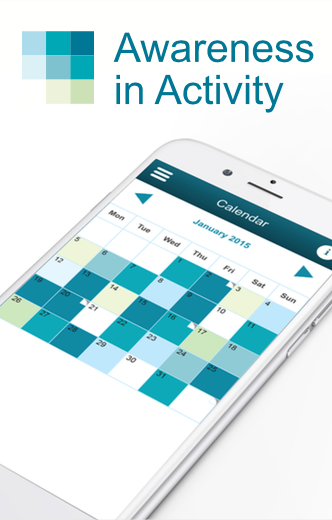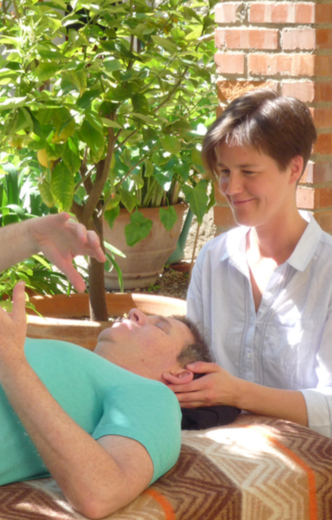HuffPost, Healthy Living 8 Jul 2014
Amanda L. Chan
If you’re not a performer, you may not be all too familiar with the Alexander Technique. It’s taught at Juilliard and other famed performing arts schools, as well as privately to opera singers and Broadway performers.
Academy Award-winning actress Lupita Nyong’o even swears by it, once saying that the practice has “just become a part of me.” But the Alexander Technique — which can perhaps be best summed up as a mindfulness and tension-relieving practice, emphasizing ease of movement — is not just for performing arts folk. One study showed it to be effective in relieving back pain. And it can also be applied to things we do every day, including walking and sitting at our desks, to help us have more ease, flexibility and lack of tension as we go about our regular activities, Bill Connington, a lecturer in acting at the Yale School of Drama, explains to HuffPost.
Connington has taught the Alexander Technique to both performers and people with Parkinson’s disease, and has also written two books on the technique, titled “Physical Expression on Stage and Screen: Using the Alexander Technique to Create Unforgettable Performances,” which just came out in the UK, and “The Alexander Technique.” He says that the practice is essentially “mindfulness in action.”
“You don’t need to go into a quiet room to meditate, you can ... bring that mindfulness into daily living,” Connington explains. It’s as simple as realizing when your body has tensed up or your breathing has become shallow in response to an external stimuli, and then making the necessary physical adjustments. He also said the technique shares similarities with practices like yoga, which also emphasize mindfulness and the breath. “But what makes the Alexander Technique a little different is you don’t have to put on special clothes, you don’t have to go to the gym, [and] you don’t have to put aside an hour or 30 minutes,” he explains. “You can take just a few moments to change what you’re doing, as you’re doing it.”
Once you are able to catch yourself hunching over, or being tense, or having a shallow breath,”you learn through the Alexander Technique to give yourself positive suggestions,” he says. “You can tell the neck to lengthen, to allow the body to go up into full stature. To allow your breathing to come into its easy, natural, even state. It’s almost a quasi-meditative state.”
Here are some common scenarios where the Alexander Technique can come in handy:Sitting at a computer:
If you have a desk job, chances are you sit at your desk hunched over your computer for hours on end. When you do this, your shoulders come up and the head retracts back and down, Connington explains.
The first step to changing this behavior is to catch yourself in the act. “Really analyze, in just a few seconds, ‘What am I doing?’” Connington says. Be mindful of the following: Are you pulling your body toward the computer? When you are typing, what is going on with your shoulders, arms and hands? What is your general body position? What is going on with your head and neck? How is your breathing? If you’re switching between multiple screens and browsers, pay attention to what you are doing.
Then, keep typing at your computer, but at the same time, remind yourself that you want to change how you’re working at the computer. “Remind yourself consciously, ‘“I would like to stop this,’” he says. “Most people skip this step; they feel themselves hunching over, and then just pull themselves up into military posture, which is too hard to maintain, and then a couple minutes later they are collapsed again.”
Then, think to yourself: Let your neck become free and feel your head released up toward the ceiling (“some people like to use the image that their head is like a balloon full of helium,” he says). Allow your torso to lengthen and shoulders to widen. Maintain easy and free breathing. And if you feel yourself wanting to lean forward to the computer again, lean from your hips rather than hunching over from your entire spine, he says.
Connington demonstrates the proper way to sit at a computer here:
Texting or using a tablet:
It’s a common sight on the subway, on the street and at the grocery store — people hunched over their phones, heads down, tapping away. To cut out this neck-straining posture using Alexander Technique principles, Connington suggests going through the following steps: The next time you text on your phone or tablet, be aware of what you’re doing with your body. At what level are you holding your device, and how easily are you able to see the screen? What are you doing with your hands and arms as you’re texting, and how are you breathing? Are you texting and walking at the same time? Is it effective? How is your torso positioned as you’re texting, and do you find that your shoulders are squeezing together? Are you pulling your head and neck downward to use the device?
Connington says the solution is simple — raise the device higher so your body doesn’t have to cave in as much. Keep your breath easy as you text on your device, and allow your body to release up into its full height. Keep your shoulders and chest wide open.
Engaging in conflict:
When you’re engaged in an argument, your body goes into a fight or flight mode where you feel emotional tension in the body, Connington says. The first step is to catch yourself physically — are you cringing due to your fight or flight response? You may find yourself holding your breath, or making your breath shallow — if you are, stop holding your breath and make sure it gets deeper. “Visualize the breath, going all the way to the diaphragm, in the lower ribs,” he says.
Then, allow your body to soften as much as you can, since when you cringe, you’re actually shortening your stature. Instead, think of your body as being at its full height. “Something as simple as imagining the distance between the top of your head and the bottom of your feet can be a simple way to remind yourself not to cringe,” he advises. “It also gives you a focus so that you’re not focusing on your fear, and you’re focusing [instead] on bringing yourself out of that fear response.”
For more ways to apply the Alexander Technique to everyday activities, check out Connington’s vimeo channel here.







